Review
August 2017
When the man from Fiat comes to pick up my long-term Talento on September 1, it will mark the end of an era, for it is then that I hang up my hat as Commercial Fleet associate editor and head for old age pensionerhood and membership of the local Darby and Joan Club.
At least, that was the plan. Having joined the staff of sister title Fleet News as production editor back in 1990, and having had the honour of editing our former title Fleet Van for nine years, I had intended this oh-so-capable fleet performer to be my swansong.
Editor-in-chief Steve Briers had other ideas, though, and has persuaded me to continue running a test van. So, while I’m handing back all my other writing responsibilities, this is one I’ll be retaining for now.
But back to the Fiat. Under the badge, the Talento is none other than the Renault Trafic which, when it was launched back in 2000, turned the LCV world on its head, offering for the first time a true car-like driving experience in a commercial vehicle, not to mention a host of other improvements in build quality and practicality.
True, the Talento has moved on from that original offering, but without that design we wouldn’t be where we are today – marvelling at how wonderful vans are in 2017 compared to 27 years ago when you would be lucky to get a radio as standard, let alone airbags, traction control, ABS brakes, Bluetooth and air-con.
The Talento has proved a real treasure during its six-months at Fleet Towers. It’s one of the most comfortable vans on the road today, with admirable road manners and, in long wheelbase format, there are no fewer than six cubic metres of cargo space on offer, enough for most fleet needs.
We’ve piled almost 5,000 miles on the clock in that time and neither my partner nor I have suffered a single back twinge, despite having undertaken journeys of up to 300 miles at a time travelling between Essex and Devon.
As an added bonus, we have not had to add any oil to the engine or air in the tyres (we carry out regular checks), so maintenance costs have totalled zero.
Reliability, meanwhile, has been 100%, with no sign of any mechanical or electronic problems.
As a fairly low-specced van, we could have done with a few extra goodies (notably a passenger airbag to protect my partner) but, to be fair, the front-end price of £21,848 is extremely reasonable, especially against our previous long termer, the Citroën Dispatch, which was a direct rival but came in at £25,398.
Another ‘goody’ that was missing from the standard spec list was a set of reversing sensors, which come in at £220 for this van and was fitted to our test vehicle. During my years with Commercial Fleet and Fleet Van, I have constantly called for these little safety stars to be made a legal requirement.
Surely it would be a simple law to pass and one which would save a huge amount of metal and, possibly, some lives. Quite why it has been ignored is anyone’s guess.
This gripe apart, the Talento goes back to its maker with a glowing review from Commercial Fleet.
July 2017
Last month, we spent much of our report eulogising about the ‘free’ extras that our long-term test Talento offers. While not in themselves a reason to make the purchase, they still give this van the edge over many of its rivals when rolled together.
One of the gadgets we didn’t mention was the little ECO button that appears on the dash beside the driver’s left leg. This wasn’t an oversight – it was omitted on purpose because we wanted to look at it in depth here.
I have to hold my hands up and be honest – I didn’t actually notice this button for the first month of our six-month trial!
When it finally came to my attention, I remembered it is a feature of not only the Talento but also its twin brothers the Vauxhall Vivaro and Renault Trafic – and as far as I know, none of the rivals in the medium van sector offer such a function. Basically, when you push it in, the engine management system nudges the power down slightly and gives the driver the opportunity to save around 7% on fuel, depending on the general way the van is driven.
I actually noticed the button while I was driving down the M5 towards my holiday home in Devon and, being a cost-conscious kind of guy (and, more importantly, having to pay for my own fuel), I jabbed it on immediately. The function has remained on ever since.
For the first five miles or so, I was conscious that the Talento wasn’t quite as perky as it had been further back down the road but after an hour or two, I didn’t really notice the difference.
Of course while fleet managers may well want this button depressed all the time, drivers might have other ideas when they are out of the yard.
We do understand, however, that the function can be “wired in” at buying time with no option to cut it out and that’s one little extra we would recommend.
So with our van in ECO mode and featuring a stop-start facility, we were all set to undertake our first official fuel economy test.
The big news is that while the Talento is rated at 44.8mpg on the combined cycle, our test figure is a more modest 36.3mpg.
This may sound like a bit of a disaster but don’t forget that the official figures are calibrated on a rolling road, so are never going to be replicated out on the real highways.
As I have attended many eco-driving courses during my years as a journalist – and don’t often put the pedal to the metal – it can safely be assumed that our figure is what any fleet manager who chooses this van can expect.
Some 10mpg under the official figure is what we normally get with our long-termers, so we aren’t complaining. However, it must be pointed out that the Citroën Dispatch we had on long-term test before this van – which is a direct rival – returned an impressive 44.02mpg in real life.
A quick bit of jiggery-pokery with the Commercial Fleet calculator reveals that over 100,000 miles, the Fiat will use £2,546 worth of diesel more than the Citroën. However, the Citroën was £3,500 more than the Fiat, offsetting the fuel saving, and leaving the two vans with similar running cost figures of around 39ppm.
June 2017
Three reasons why this van fits the bill for just about anyone who needs a commercial vehicle.
After spending a little more than three months behind the wheel of our long-term test Fiat Talento, I have come to the conclusion that this van is the best of all sizes for anyone needing a commercial vehicle. There are three reasons.
For those new to this vehicle, it’s rather unusual in that it is a long wheelbase, low roof, medium panel van variant, which isn’t exactly the most common combination.
But what it does mean is that there are 6.2 cubic metres of loadspace on offer as opposed to 5.2 cu m for its short wheelbase brother – and so far, however much junk I have bunged in the back of it, there always seems to be space to spare. The vast majority of van users will find this volume quite adequate for their needs.
The second thing about this van is that it can still fit into underground car parks thanks to its 1.9-metre height. Mind you, once inside it’s the devil’s own job to squeeze into one of those stupidly small parking spaces on offer. Thank the techno gods for those reversing sensors is all I can say.
The third reason for my eulogy is that the medium panel van sector offers the largest vehicles which actually feel like cars to drive.
Sitting in the Talento’s very comfy and supportive driving seat, it’s easy to imagine that you are behind the wheel of a luxury car, such is the van’s smooth, quiet road manners. Anything over this size and the van definitely feels like a commercial vehicle rather than a car.
So all in all, we are pretty pleased with what the Talento has to offer.
And I am still marvelling at the small items that set this van apart from some competitors – little touches that on their own won’t exactly set the world on fire but, added together, make the Talento a joy to use on business.
There’s a massive scooped-out area on top of the dash which will house all the detritus I usually carry around with me to stop it rolling all over the cab. This area even features a little row of slots to hold pound coins and also a USB port so I can plug my sat-nav in without having wires dangling across the dashboard.
Down below there is an extra coffee cup holder so all three occupants are catered for – and when the third one is pulled down it acts as a ‘curry hook’ so takeaways don’t end up strewn across the floor on the way home. There’s also a secret hideaway for valuable items which is accessed by pulling up the squab of the middle seat, although no doubt the lowlifes who break into vans on a regular basis will have already learned about this.
In the cargo area, our van is fully ply-lined – including, rather unusually, the floor – and the wooden base acts as a brake to any loose cargo that would otherwise go flying.
Meanwhile there are no fewer than 17 lashing eyes including six up near the ceiling. Too many vans nowadays just have hooks in the floor, which makes it nigh on impossible to tie down single items properly.
There are probably lots more little goodies like this which I haven’t yet discovered but, suffice to say, the total package offered by Fiat is a fine one indeed – it’s easy to see why this van (a remake of the Renault Trafic and Vauxhall Vivaro) has been so popular since its original launch in 2001.
May 2017
The Fiat Talentos low upfront cost should be weighed against the lack of onboard extras.
We are now entering our second month with the long-term test Fiat Talento and as is common with our six-month test vans, we have found quite a few things we like about the new vehicle – and a few not-so-good points.
The Talento is Fiat’s new medium panel van, replacing the Scudo last year. Whereas the Scudo was a clone of the Citroën Dispatch and Peugeot Expert, the Talento is a reworking of the Renault Trafic, Vauxhall Vivaro and Nissan NV300, making it one of the most ubiquitous vehicles on Britain’s roads at present.
We also happen to know quite a few trades people who run these vans in their various guises and, invariably, they report that they are comfortable, well-specced and solidly built, giving few operational problems during their fleet lives.
Our test vehicle offers a fairly basic spec level, so is exactly the kind of van that our readers are likely to choose for their drivers. While it means that it lacks some of the creature comforts that we are used to seeing now in modern vans, the price is very reasonable, making up for any shortfall in the ‘goodies’ department.
To put things into perspective, the Talento weighs in at £21,848 ex-VAT whereas our last long-termer, the Citroën Dispatch, cost £25,398 – and the two are direct rivals.
So when we moaned last month that there was no passenger airbag, air-con at a whopping £720 and reversing sensors at £220, all these complaints have to be weighed against that low upfront cost.
Having said that, we are hearing increasing evidence from the big auction houses that many second buyers are now willingly hoovering up used vans with high specifications for extra cash, so sellers of the more mundane offerings like this one could lose out at disposal time, thus skewing the wholelife cost of the van against the first owner.
In other words, it doesn’t necessarily pay to skimp on the goodies at buying time.
Our van isn’t completely bereft of creature comforts, mind you. The radio/CD slot is of average quality (or, as we prefer to call it, a ‘cooking’ version) but there is a USB connector to plug in an iPod and also another USB hole on top of the dash, which means I can plug in my TomTom sat-nav without having wires trailing all over the place. Meanwhile I can also charge up my mobile phone in the traditional cigar lighter hole and listen to my own music at the same time.
And, of course, on the safety front we now get all the obligatory gadgets such as ABS brakes and ESP traction control – and Fiat has also thrown in a hill-hold facility for good measure.
And as a well-known coffee fanatic, I must add those three cup holders to the tally of useful things.
Meanwhile the rear of the van is enveloped in wood, which means that it will be blissfully free of any reverse ‘dings’ – loose cargo making dents from the inside out – and that’s one added extra that we would place above all others when buying new vans. It’s amazing how many turn up in the auction halls covered in annoying little marks which invariably knock about £500 off the going price as they are nigh on impossible to fix at a worthwhile cost.
So far we are extremely impressed with both the build quality and road manners of this van. The seats are nice and supportive, although rather on the small side which makes it feel as though you are sitting on them rather than in them, while handling is taut and responsive. And with 125PS on tap, there is certainly no shortage of power either round town or out on the motorway.
April 2017
Renault Trafic-based van deserves respect for its ‘admirable road manners and sheer practicality’
Nowadays, most of the big van manufacturers share their models – it’s a matter of economics. One expert told us that to make a profit on a new vehicle after all the R&D costs have been deducted, a maker would have to sell 100,000 units a year – and none do that in the UK where there is additional expense in producing right-hand drive models. In fact of the big outfits, only Volkswagen has a range of vans that is totally its own.
So the van world consists of a mish-mash of cloned models, which change every so often just to confuse us all.
Fiat’s old medium panel van, the Scudo, was a clone of the Citroën Dispatch, Peugeot Expert and Toyota Proace, but with the launch of the new Talento last year, Fiat ditched that old arrangement and threw its lot in with Renault.
Thus the Talento is, under the skin, none other than our old friend the Renault Trafic which was introduced in 2014. Incidentally it is also a clone of the Vauxhall Vivaro and Nissan NV300. Confusing or what?
We describe this van as an old friend because, since the first generation was launched in 2001, we have driven many different variants and have always been left with the utmost respect for its admirable road manners and sheer practicality.
Thus, when Fiat offered us a Talento to test for six months, we rubbed our hands with glee and jumped at the chance.
Our Talento is rather unusual in that it’s the long wheelbase low-roof variety – not exactly a common sight on Britain’s roads. It means that the van is stretched to accommodate six cubic metres of cargo (up from 5.2 cu m in the standard model) – not far off that offered by the smallest Ducato, which is in the category above the Talento.
Our test model weighs in at a basic £21,845 ex-VAT and features a 1.6-litre turbodiesel powerplant, which may sound rather diminutive for a van of this size but it pumps out a healthy 125PS of power and 320Nm of torque. Nowadays in this hi-tech world, cubic capacity no longer equates directly to power output – it seems the engineers can simply ‘dial in’ any amount of power they want to any size engine.
Official fuel economy figure on the combined cycle is 44.8mpg, a far cry from the 53.3mpg offered by our old long-termer, the rival Citroën Dispatch. Mind you, that van only managed 44.02mpg in real life during our test period, so it will be interesting to see how the Talento fares, fuel-wise, when out on the road.
Standard spec includes a driver’s airbag, remote locking, a digital radio CD/MP3/Aux/USB with Bluetooth and hands-free connectivity and ESC (electronic speed control) with Hill Holder and Traction+ – not exactly a great tally, but then it is very reasonably priced so maybe one can’t moan too much.
There is no passenger airbag and we were sad to see that the air-con unit came as an optional extra at £720, while the reversing sensors are an additional £220.
As we say about the Peugeot Boxer (see page 40) we feel these sensors should be a legal requirement on panels vans.
As usual, our van will be put through a gruelling time in the next six months as we test it to the limits. We’ll be reporting back on our findings in subsequent issues.
Specs
| Manufacturer | Fiat |
| Model | Talento Light Commercial |
| Specification | Fiat Talento 12 LWB Diesel 2.0 Ecojet 145 Platform Cab |
| Model Year | 2023.00 |
| Annual VED (Road tax) | £1035 |
| BIK List Price | £26,690 |
| CO2 | 300g/km |
| Insurance Group | N/A |
| CC | 1,997 |
| Fuel Type | |
| Vehicle Type | Chassis and conversion |
| Luggage capacity (Seats up) | N/A |
Running Costs
| P11D | £26,690 |
| Cost per mile | 53.46ppm |
| Residual value | £6,550 |
| Insurance group | N/A |
| Fuel Type | |
| Cost per mile | 53.46ppm |
| Fuel | 15.83ppm |
| Depreciation | 33.66ppm |
| Service maintenance and repair | 3.97ppm |
Rivals
Info at a glance
-
P11D Price
£26,690
-
MPG
39.7 -
CO2 Emissions
300g/km -
Payload
N/A -
Load Volume
N/A -
Load Width
N/A -
Load Length
5,248mm



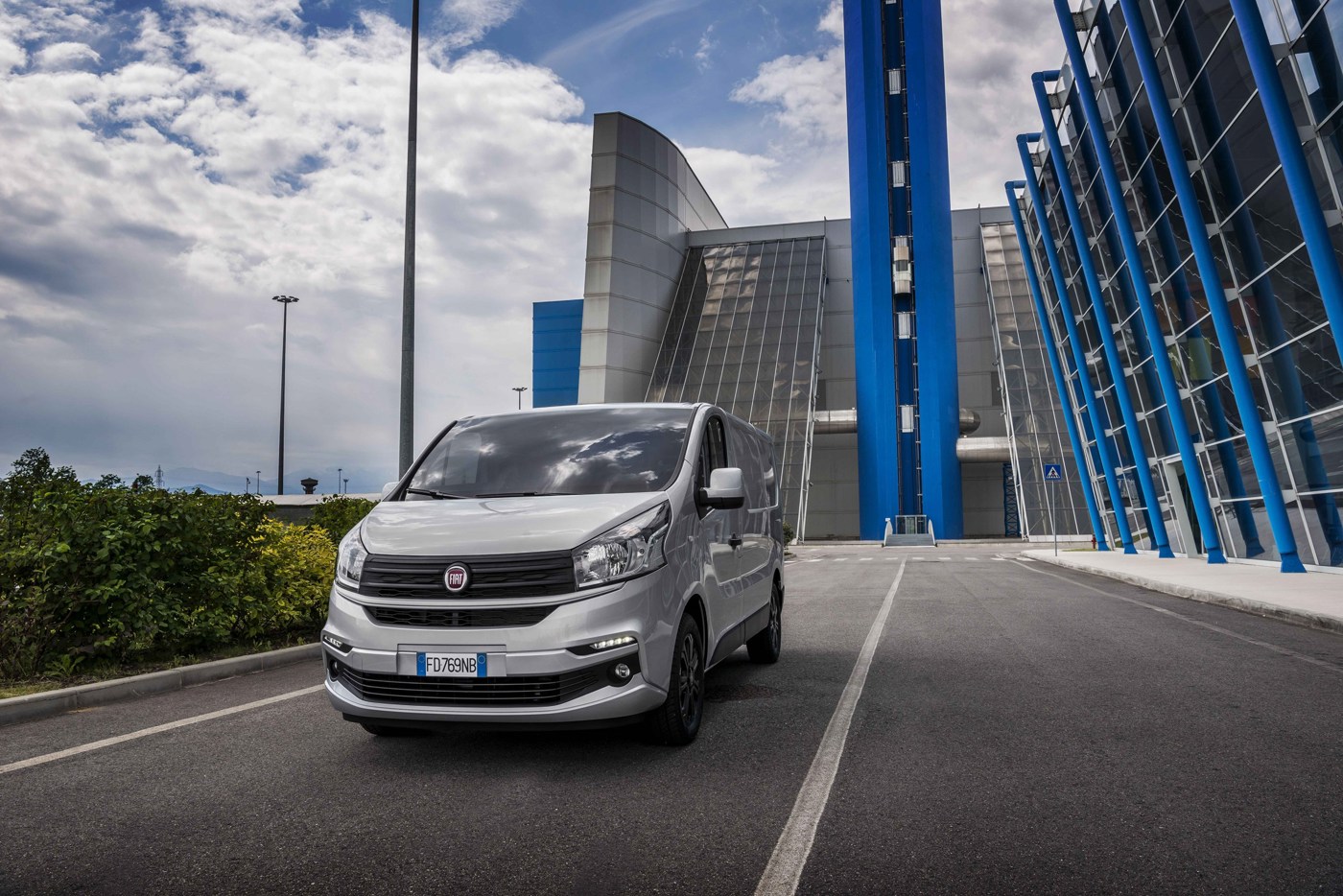
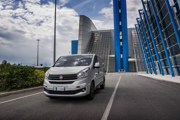
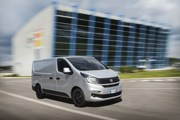
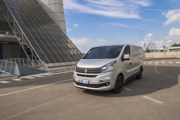
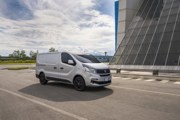
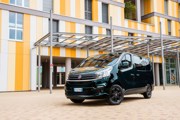

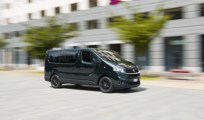

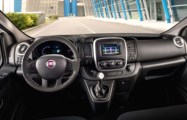
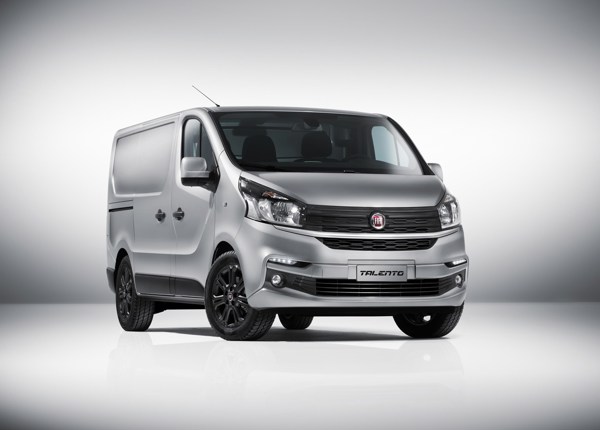
 Diesel
Diesel












